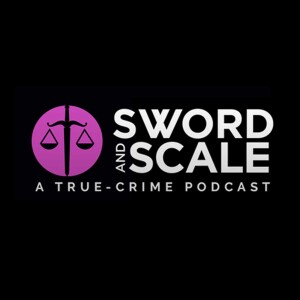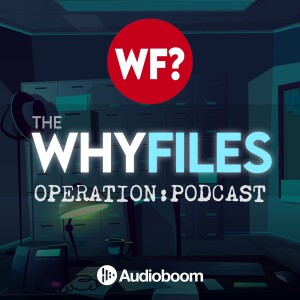
Episode List

Ep 48 PFAS regulation and litigation in US with Boston Attorney John Gardella from CMBG3 Law
Welcome back to the Talking PFAS podcast. If you are joining me for the first time a very big welcome to you. I am a journalist and your host Kayleen Bell. Last week I brought you a discussion with Peter Murphy, the Managing Director of EPOC Enviro. This Australian company recently managed to secure patents in Australia and the US for their SAFF technology. I encourage you to have a listen to that episode to learn more about the SAFF suite of products using foam fractionation to remove PFAS. And I would like to also take this opportunity to thank EPOC Enviro for sponsoring today’s episode of Talking PFAS podcast. You will hear a short announcement from Pete about midway through today’s episode. And at the end of today’s episode there will be a short announcement about how you can get involved with sponsorship for Talking PFAS podcast and you can read about it of course in the show notes. Today’s guest is a very welcome return guest to the Talking PFAS podcast. It is Environmental Lawyer, John Gardella, Boston Attorney, from CMBG3 Law in the United States. John had the honour of being the only person in the country that was recognised as the thought leader on PFAS in 2020 and 2021 by the esteemed National Law Review. He writes regularly for the National Law Review and his website on PFAS. We had a really interesting and informative discussion about litigation, and regulation updates in the US, including the current rollbacks that are currently happening under the Trump EPA. There is also some other really important information in today’s episode about PFAS and health effects including some new ones that are being acknowledged by the legal system in the US. John also talks about how companies need to remain vigilant at looking at their processes to see if PFAS is involved in them to protect themselves from PFAS litigation. In today’s episode we talk about one particular case which John is currently involved in at the moment where a company is being sued for using water that contained PFAS in their manufacturing and they didn’t know. I hope you enjoyed today’s episode and don’t forget to check out the show notes and also if you enjoy the Talking PFAS podcast please consider subscribing so that you don’t miss an episode and also sharing it with your colleagues and friends. And next episode of Talking PFAS I will be bringing you a discussion I had with Alison Ling she is from the Department of Civil Engineering at the University of St. Thomas in St Paul, Minnesota in the US. We are going to be discussing a couple of research papers that Alison Ling has been the main author on and this was from her paper about the estimated scale of costs to remove PFAS from the environment at current emission rates and that paper states that "the current costs to remove and destroy the total PFAS mass released annually into the environment would likely exceed the global GDP of $106 trillion US dollars." And she goes on to point out that "while this level of treatment is not technically or economically achievable it highlights the unaffordability of using environmental remediation alone to manage environmental PFAS stocks. Without significant reductions in productions and emissions the mass of PFAS present in the global environment will continue to rise." So I look forward to bringing you that discussion with Alison Ling. Lastly if you are a remediation company or a company that specialises in selling PFAS free products please contact me at TalkingPFAS@gmail.com to find out more about how you can get involved with limited sponsorship opportunities. Please note terms and conditions do apply and I maintain full editorial control. Also any featured remediation companies is not my endorsement. Thank you again for listening see you next time. Thank you again to EPOC Enviro who were today’s sponsor of Talking PFAS podcast. EPOC Enviro home page: https://epocenviro.com/ SAFF Family: https://epocenviro.com/saff-family/ Technical Publications: https://epocenviro.com/technical-publications/ Case Studies: https://epocenviro.com/projects/ Socials: https://www.linkedin.com/company/epoc-enviro/?viewAsMember=true Contact Details: info@epocenviro.comSee omnystudio.com/listener for privacy information.

Ep 47 Season 7 Peter Murphy EPOC Enviro Australia SAFF Foam Fractionation
Welcome back to the Talking PFAS podcast. If you are joining me for the first time a very big welcome to you. I am a journalist and your host Kayleen Bell. Last episode I brought you a discussion with Adjunct Professor David Beale. He is a senior research scientist who leads the CSIRO’s Ecosurveillance Systems team in Queensland. We discussed David’s work looking at the effects of PFAS on some freshwater turtles in Queensland, following a PFAS contamination event. And I encourage you to have a listen to that episode. Today my guest and I will be discussing in depth one of many remediation methods for removing PFAS from water. Specifically we will be talking about the method of foam fractionation to remove PFAS. My guest is Peter Murphy, the Managing Director of EPOC Enviro. This Australian company has recently managed to secure patents in Australia and the US for their SAFF technology. On the 10/03/2025 EPOC Enviro announced the recent approval of its foam fractionation patent by the US Patent and Trademark Office, securing exclusive rights for SAFF technology in the territory through to December, 2040. And on the 1/04/2025 EPOC Enviro announced the approval of its foam fractionation patent by IP Australia securing exclusive rights for SAFF technology Down Under through to December 2038. EPOC Enviro first conceived of foam fractionation as a method for PFAS removal in 2015 and has since developed a fleet of PFAS remediation technologies based on this principle. The technology has now successfully treated nearly 2 billion litres (or 530,000,000+ gallons) of PFAS impacted waters across three continents. EPOC Enviro also has just released the news of the latest addition to their fleet of PFAS remediation technology being the SAFF 10 unit and you will hear more about that today from Peter. The systems have been used in Sweden, Denmark, Holland, Belgium, France, Italy, Germany, England, Australia and the US. At the moment they are going to be looking to expand into Japan and Israel. I hope you enjoyed today’s discussion. Next episode I will be bringing you a discussion I had with John Gardella an Attorney from CMBG3 Law in Boston. John is a return guest to the Talking PFAS podcast and it is always very informative to speak with him. John had the honour of being the only person in the country that was recognised as a thought leader on PFAS in 2020 and 2021 by the esteemed National Law Review. He writes regularly for the National Law Review and his website on PFAS. We had a really interesting and informative discussion about litigation, and regulation updates, including the rollbacks that are happening under the Trump EPA. There is also some other really important information in next week’s episode about the health effects of PFAS including some new ones that are being acknowledged by the legal system in the US. I highly recommend you come back and listen to this episode which is not to be missed. We also talk about how companies need to remain vigilant in protecting themselves from PFAS litigation. I also would like to announce that today’s guest EPOC Enviro have agreed to sponsor my next episode. If you are a remediation company and are interested in finding out more about sponsorship opportunities please email TalkingPFAS@gmail.com. Please note terms and conditions do apply, including being subject to the usual journalism rigour I apply to all my interviews, and the agreement that I will maintain editorial control over the discussion about your company’s technology, discussing pros and cons. I look forward to you coming back to join me again for some more great PFAS discussions. Lastly, to my valued listeners, thank you for listening! Please consider subscribing to the podcast so you don’t miss an episode and also consider posting a review and consider sharing the podcast with a colleague or friend. Thank you, it would just help more people get to hear this podcast. Thank you again for listening, see you next time. EPOC Enviro home page: https://epocenviro.com/ SAFF Family: https://epocenviro.com/saff-family/ Technical Publications: https://epocenviro.com/technical-publications/ Case Studies: https://epocenviro.com/projects/ Socials: https://www.linkedin.com/company/epoc-enviro/?viewAsMember=true Contact Details: info@epocenviro.com See omnystudio.com/listener for privacy information.

Ep 46 Season 7 PFAS in Turtles QLD with David Beale also for QLD SL oral history
Welcome back to the Talking PFAS podcast. If you are joining me for the first time a very big welcome to you. I am a journalist and your host Kayleen Bell. Last episode I brought you a very interesting discussion with Dr Cheng Zhang from the Australian Institute for Bioengineering and Nanotechnology at the University of Queensland in Australia. We spoke about many things but mainly we discussed how his team of researchers have discovered that retrieved PFAS can be used in batteries. I highly recommend you have a listen to that episode to find out more. Today’s discussion will complete the PFAS collection of interviews that I have recorded for the Queensland State Library digital PFAS collection. I will put a link to that collection in today’s show notes. Now a little about my guest today, he is Adjunct Professor David Beale, a senior research scientist who leads the CSIRO’s Ecosurveillance Systems team in Queensland. The majority of David’s research career is looking at the impact of contaminants on organisms, whether it be wildlife or humans or any biological system. He has made significant contributions in the field of environmental applications using specialised omics tools to study the effects of contaminants like PFAS on wildlife. Today we will be focusing on David’s work looking at the effects of PFAS on some freshwater turtles in Queensland. He was not able to disclose the location where these turtles are indeed being affected by PFAS contamination, but he was able to say that the PFAS event that caused the contamination, occurred in around 2017/2018 in Australia. David’s team are also doing work looking at the effects of PFAS on other wildlife such as marine turtles, some snakes and frogs, including cane toads, and water dragons around South- East Queensland. David advised me that he has received a CSIRO Julius Career Award which has allowed him to meet and collaborate with environmental regulators worldwide using omics-based tools to assess pollution impacts with a significant focus on PFAS. As part of his JCA travels, he has visited the USA Environmental Protection Agency (EPA), the Canadian Department of Climate Change & Environment, the Fraunhofer Institute in Germany, and many other leading academic institutions and environmental regulators across the UK, Europe, Asia and North America. David said that from their research looking at PFAS effects on freshwater turtles, their results demonstrate that there is an impact, that they are seeing now. He said it could be a generational impact where the particular species of freshwater turtle studied may not exist in the future because of PFAS. Another big message from David Beale in today’s discussion is that “there just isn’t enough focus on researching the effects of chemical contaminants on wildlife,” in Australia. Next episode I will be bringing you a discussion I had with Peter Murphy from EPOC Enviro (https://epocenviro.com/). We talk about the latest news and developments for this Aussie remediation company including discussing their US and Australian patents for their foam fractionation technology used in their SAFF suite of products. And finally a quick announcement, I am now taking expressions of interest from remediation companies to explore sponsorship opportunities for the Talking PFAS podcast. For more details (& the terms and conditions) you can email me your details including phone number at TalkingPFAS@gmail.com I look forward to you coming back to join me again for some more great PFAS discussions. Lastly, to my valued listeners, thank you for listening! Please consider subscribing to the podcast so you don’t miss an episode and consider posting a review or sharing the podcast with a colleague or friend. Copyright Notice: As always all information in today’s episode is covered by copyright law. Please feel free to share links to this episode broadly, in its entirety (no edited version allowed), to social media or via text or email. If you are a guest in the podcast you have permission to publish a link to the full episode, with attribution to Talking PFAS podcast, produced by journalist Kayleen Bell, on your own website. Contact me at TalkingPFAS@gmail.com Show Notes Links: QLD State Library PFAS oral history collection by Kayleen Bell https://onesearch.slq.qld.gov.au/discovery/fulldisplay?context=L&vid=61SLQ_INST:SLQ&search_scope=SLQ_collections&tab=All&docid=alma99183795520502061 1. Paper 1 discussed today: “Forever chemicals don’t make hero mutant ninja turtles: Elevated PFAS levels linked to unusual scute development in newly emerged freshwater turtle hatchlings (Emydura macquarii macquarii) and a reduction in turtle populations.” David Beale et al. Science of The Total Environment Volume 956, 15 December, 2024. Elsevier (open access). https://www.sciencedirect.com/science/article/pii/S0048969724064696 2. Paper 2 discussed today: “Partitioning of PFAS to serum, tissues, eggs and hatchlings of an Australian freshwater turtle.” Suzanne Vardy et al (& David Beale). Journal of Hazardous Materials. Elsevier (open access). https://www.sciencedirect.com/science/article/pii/S0304389424004643?via%3Dihub 3. Current Australian Inquiry PFAS: Select Committee on PFAS: On 22 August 2024, the Senate appointed a select committee, to be known as the Select Committee on PFAS (per and polyfluoroalkyl substances), to inquire into the extent, regulation and management of PFAS, and present its final report by 5 August 2025. The committee has reopened submissions and welcomes contributions from community members impacted by PFAS, and other interested parties. The committee secretariat can also help with any inquiries and can be contacted on telephone +61 2 6277 3247 or by email to PFAS.sen@aph.gov.au. https://www.aph.gov.au/Parliamentary_Business/Committees/Senate/PFAS_per_and_polyfluoroalkyl_substances/PFAS/Terms_of_Reference CSIRO Submission #22 https://www.aph.gov.au/Parliamentary_Business/Committees/Senate/PFAS_per_and_polyfluoroalkyl_substances/PFAS/Submissions Thank you !!See omnystudio.com/listener for privacy information.

Ep 45 Season 7 Talking PFAS Batteries Dr Cheng Zhang also for QLD SL
Talking PFAS Episode 45 - Recorded 04/02/2025 at the ABIS QLD with Dr Cheng Zhang on PFAS in batteries and PFAS sorbents, and landfill remediation techniques. Welcome back to the Talking PFAS podcast. If you are joining me for the first time a very big welcome to you. I am a journalist and your host Kayleen Bell. I am so very glad to be back to bring you a new season of Talking PFAS podcast. There is so much PFAS news to catch up on and many new developments to bring you this season from both here in Australia and globally. I will also have an important announcement at the end of today’s episode regarding sponsorship opportunities. Today’s episode is one of the final interviews I recorded for the QLD State Library digital PFAS oral history collection. This interview will be added to my publicly available and free collection of interviews held in the QLD State Library in Australia. I will put a link to that collection in the show notes. My guest today is Dr Cheng Zhang from the Australian Institute for Bioengineering and Nanotechnology at the University of Queensland in Australia. He has an outstanding track record in the fields of fluoropolymers, polymer chemistry and materials science. Today’s discussion covers many topics, and in parts it is quite technical, but you can read along with the transcript, which is automatically prepared (not by me). The transcript prepared and fact checked by me will be available in the QLD State Library collection which may take a few months to become available. Also, one important disclaimer to add regarding today’s discussion is that it is provided for information purposes only. There is a portion of our chat that discusses possible ways to reduce PFAS in the body such as blood donation, and also a possible future oral drug, that may be able to remove or reduce PFAS levels from the blood. I emphasise strongly that this area is an upcoming research area for Dr Zhang’s team and both Dr Cheng Zhang and I are not medical practitioners, and as such, our discussion today should absolutely not be taken as medical advice for anyone concerned about PFAS levels in their blood. Listeners are advised to seek their own medical advice from experts in the field before using any oral medication or rushing to blood donation. Thank you. Now, with that out of the way, it is my pleasure to tell you a little more about Dr Zhang before I play today’s episode. We mainly discuss how Dr Zhang and his team of researchers have developed a way to remove PFAS from water and landfill leachate using special sorbents. The plan is to then take the removed PFAS and use it in batteries. His team are also shortly conducting a pilot program at Brisbane’s Luggage Point Wastewater Treatment Plant to remove PFAS from landfill leachate. Dr Zhang says up until now there has been no treatment for PFAS in landfill leachate and also he says that the retrieved PFAS offers benefits to battery manufacturers. He also talks about his connections with international industry partners like Chemours, US Department of Defence, and companies in Australia like GHD, and in New Zealand OCTA. Next episode I will be bringing you a discussion that I had with David Beale. He is from the Environment Research Unit at the CSIRO, the Commonwealth Scientific and Industrial Research Organisation in the Eco Sciences Precinct in Dutton Park, QLD. He has done some work looking at the impacts of PFAS on freshwater turtles. It is a really interesting discussion and I encourage you to come back and have a listen to that one. And finally, I am pleased to announce that, as many remediation companies have already reached out to me about their remediation methods for PFAS, I am now taking expressions of interest from remediation companies to explore sponsorship opportunities for the Talking PFAS podcast. Please feel free to email TalkingPFAS@gmail.com thank you very much, and make sure you provide your phone number. To my valued listeners: Thank you for listening. Please consider subscribing to the podcast so you don't miss an episode and consider posting a review. As always all information in today's episode is copyright. Please feel free to share links to this episode in its entirety to social media or via email. If you are featured in the podcast you have permission to publish a link to the full episode on your own website. Contact me TalkingPFAS@gmail.com Links from Today's episode: Fluorination in advanced battery design Wang et al https://espace.library.uq.edu.au/view/UQ:b4c24c4 OECD (2024), Synthesis report on understanding Perfluoropolyethers (PFPEs) and their life cycle, OECD Series on Risk Management of Chemicals, OECD Publishing, Paris, https://doi.org/10.1787/99ee2d3e-en. Gasiorowski R, Forbes MK, Silver G, et al. Effect of Plasma and Blood Donations on Levels of Perfluoroalkyl and Polyfluoroalkyl Substances in Firefighters in Australia: A Randomized Clinical Trial. JAMA Netw Open. 2022;5(4):e226257. doi:10.1001/jamanetworkopen.2022.6257 QLD State Library - PFAS oral history collection by Kayleen Bell https://onesearch.slq.qld.gov.au/discovery/fulldisplay?context=L&vid=61SLQ_INST:SLQ&search_scope=SLQ_collections&tab=All&docid=alma99183795520502061 Juliane Gluge from Zurich, Switzerland paper “An Overview of the uses of PFAS” https://pubs.rsc.org/en/content/articlelanding/2020/em/d0em00291g See omnystudio.com/listener for privacy information.

Ep 44 Talking PFAS CRC Care Masterclass with Paul Nathanail (UK) & Scott Warner (US)
Talking PFAS Episode 44 Show Description/Notes/Links INTRO: Welcome back to Talking PFAS podcast. I am a journalist and your host Kayleen Bell. If you are new to the podcast, I encourage you to have a binge listen, as the content is, of course, still very relevant today as attention, regulation and litigation regarding PFAS chemicals continues to accelerate. Today’s discussion is an Interview with two guests who were training people at the CRC Care Risk to Remediation Masterclass in Newcastle from the 1-5 May, 2023. My guests are Paul Nathanail from Nottingham, England, Technical Director of LQM, which specialises in contaminated land management in England and around the world. I have previously interview Paul before, when he was a keynote speaker at CRC Care International Clean Up Conference in Adelaide, South Australia. You can hear that very important discussion in episode 37. My second guest is Scott Warner, from California, who is a geologist, and has specialised as a hydrogeologist studying and assessing groundwater conditions, for 40 years. Scott is the Principal Hydrogeologist for the BBJ Group. In early May I had the privilege of attending one of the training days at the CRC Care’s 4th Risk to Remediation Masterclass. This course was held from the 1-5 May, 2023, at Newcastle (NSW), Australia. I interviewed Paul and Scott at the end of a long week and a long day of very in depth training. It is important to clarify that this was not a course that was solely dedicated to PFAS remediation but remediation in general, which included PFAS. CRC Care provided me with this information following the event: “The CRC are Risk to Remediation Masterclass was a five-day course that provided participants with the cutting edge skills to manage and remediate contaminated sites in Australia and globally. This course was developed in response to the critical need to build capacity to address the growing global contamination crisis. While technical lessons learned through the study of past projects an advantage of this course was the semi-structured discussions problem-solving and personal interactions that allowed participants to consider the many facets of modern contaminant site assessment and remedial design. The course also discussed aspects of sustainable low impact remediation approaches, climate change considerations, policy and regulatory matters and economic considerations, all within the context of gaining and maintaining a social licence to operate. There were 75 delegates present, and the Masterclass 2023 was attended by delegates from Australia and from overseas. The delegates were from a varied background and experience. They were from Department of Defence, regulators for EPA VIC and EPA Tasmania, Federal Government, consultants and practitioners, academia, scientists, researchers and early career professionals. And the overseas delegates were from Malaysia and South Africa. Now to my discussion with Paul Nathanail from the UK and Scott Warner from California. Special thanks to CRC Care for allowing me to attend. LINKS: Link to Scott Warner’s survey: https://forms.office.com/r/iSZdvnN6XS Link to Scott Warner’s Wiley paper: https://doi.org/10.1002/rem.21753 Link to Scott Warner’s company BBJ Group: https://www.bbjgroup.com/ Link to Paul Nathanail company LQM: https://www.lqm.co.uk/pages/meet-the-team Link to CRC Care: https://crccare.com/ OUTRO: (With Important PFAS News from Australia) I hope to bring you some information from the ALGA event that I attended at the end of April later in this season. PFAS NEWS AUSTRALIA I have some big. Australia PFAS news. You might have heard me mention a Super Class Action which is now being referred to as a Multi-Site PFAS Class Action. The following information is largely taken from a Shine Lawyers media release, but not all is a direct quote. The applicants in the multi-site PFAS Class Action represented by Shine Lawyers have reached an ‘in principle’ agreement with the Commonwealth to settle the multi-site PFAS Contamination class action against the Department of Defence. These are residents from seven communities across Bullsbrook (WA), Richmond (NSW), Wagga Wagga (NSW), Wodonga/Bandiana (VIC), Edinburgh (SA), Darwin (NT), and Townsville (QLD). Shine Lawyers state that those seven communities were set to head to the Federal Court for the start of a trial which would examine the Commonwealth’s alleged responsibility for the spread of PFAS chemicals from military bases across the country into neighboring communities soil and groundwater. Shine lawyers fought to compensate residents living near these military bases after their properties lost value due to contamination caused by these toxic chemicals and the parties have agreed in principle on an amount of $132.7 million and the break-up of that amount is yet to be determined but it could include up to 30,000 people. Shine Lawyers joint head of class actions Craig Allsop said while the news is positive the outcome is still subject to approval by the Federal Court. Shine Lawyers will continue to pursue compensation for residents of Wreck Bay in the matter of Wreck Bay Aboriginal Community Council and Anor -v- the Commonwealth. And Justice Lee ordered a further remediation in the Wreck Bay proceeding and stood the hearing down until the 29th of May. I hope to bring you more about the super class action in the future in the podcast. And I encourage any of the residents who were involved in this class action and would like to share their PFAS story to please reach out to me at TalkingPFAS@gmail.com If you have not subscribed to the podcast I encourage you to subscribe so that you will not miss an episode. As always all information in today’s episode is copyright but please feel free to share the episode via email or social media or wherever you share your podcasts and please contact me for republishing permissions. Thanks again for listening - I value your feedback and suggestions. Listening Tip: I know most of my listeners prefer to listen on their mobile, and I personally like to listen to podcasts on my mobile with earbuds, but for some people this episode might be better to listen to on a desktop. This is only if you don’t like very mild background noise from the nearby bingo that was happening outside the room we interviewed in at the event venue. See omnystudio.com/listener for privacy information.
Create Your Podcast In Minutes
- Full-featured podcast site
- Unlimited storage and bandwidth
- Comprehensive podcast stats
- Distribute to Apple Podcasts, Spotify, and more
- Make money with your podcast












